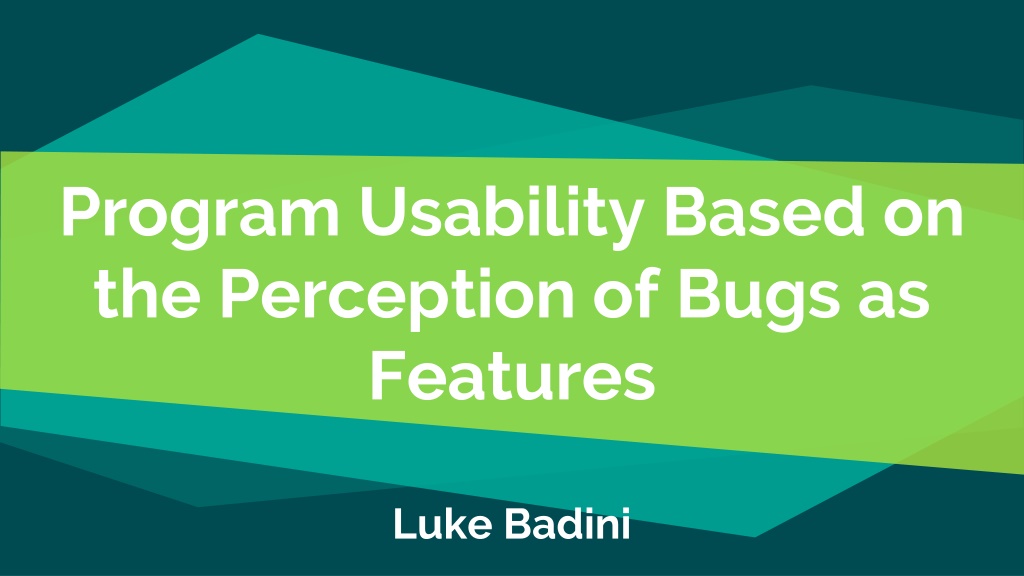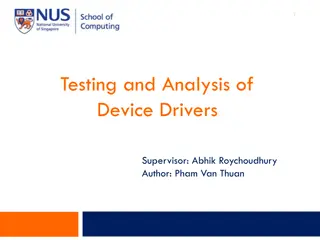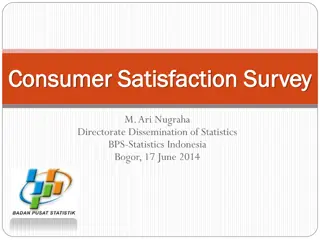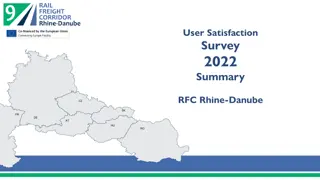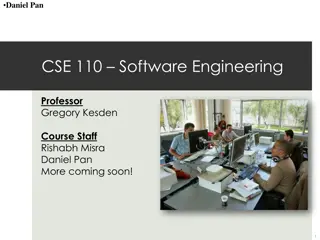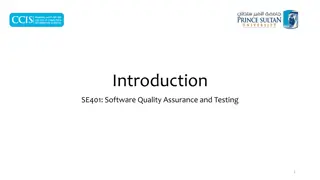Understanding the Impact of Bugs on User Satisfaction in Software Programs
Exploring the concept of bugs perceived as features in software programs and its effect on user satisfaction. The study involves introducing bugs as features to one group while keeping another group unaware, aiming to determine the influence on user satisfaction. Challenges with user interface, bugs, and modifications in ArgoUML are also discussed.
Uploaded on Sep 24, 2024 | 0 Views
Download Presentation

Please find below an Image/Link to download the presentation.
The content on the website is provided AS IS for your information and personal use only. It may not be sold, licensed, or shared on other websites without obtaining consent from the author. Download presentation by click this link. If you encounter any issues during the download, it is possible that the publisher has removed the file from their server.
E N D
Presentation Transcript
Program Usability Based on the Perception of Bugs as Features Luke Badini
User Interface Having a responsive user interface is important for user satisfaction UIs are a major part of a program 48% of the code for a program 45% of the design process is devoted to the user interface[1]
Bugs A bug is a flaw in a program that causes it to behave in an unexpected way Herzig et al. suggests that it is difficult to convince humans that a bug is a feature[2] A challenge I faced was convincing people that my changes actually were a feature rather than a bug
Research Question How much does telling a user that a bug is a feature affect their satisfaction with using a program?
Hypothesis The feature group reports a higher user satisfaction score than the bug group
Experiment Overview Two experimental groups: Feature group Bug group Introduce a bug into a program Tell the feature group that the bug is a feature
Unified Modeling Language (UML) ArgoUML is an open source UML editor programmed in Java[3] Visual language used create models of programs
ArgoUML Modifications Tooltip responsiveness: 2000ms (2 seconds) Click delay: 1000ms (1 second) Graphical distortion: random from -10 to 10 units
Challenges of ArgoUML Function documentation is not descriptive Code is poorly structured
Experiment Participants: Union College students aged 18-22 (N = 16) 6 participants had previously taken CSC-260 Large Scale Software Design 3 groups: Control (n = 5) used normal ArgoUML Feature (n = 5) used modified ArgoUML and was told about the modifications Bug (n = 6) used modified ArgoUML and was not told about the modifications
Experiment You will notice that hovering over icons and making new classes will be slower than normal, and that when you make a new class it will be displaced from where you click the mouse. Extra information given to the feature group
Data Each participant took a survey following the experiment Included questions about the modifications I made as well as red herring questions Times for each of the UML diagrams (in seconds)
Data Analysis Survey data: two-sample chi-squared tests Time data: two-sample t-test
Data Analysis Statistically significant results for: i. Hovering over tooltips: Feature vs. Bug ii. Click accuracy: Control vs. Feature iii.Frustration: Control vs. Feature x2-value p-value i 8.927 0.02 - 0.01 ii 6.900 0.05 - 0.025 iii 7.723 0.025 - 0.02
Data Analysis No statistically significant results for the time data
Results/Conclusions A few conclusions: Changes did not affect how long it took to draw UML diagrams Bug group less satisfied with tooltips than feature group Feature group was able to notice the change to click accuracy Feature group was more frustrated with using ArgoUML
Summary With these results, I am not able to fully prove my hypothesis Not enough statistically significant data to back it up Could be due to multiple things, including: Not enough data Poor experiment design
Citations [1] Brad A. Myers and Mary Beth Rosson. Survey on user interface programming. In Proceedings of the SIGCHI Conference on Human Factors in Computing Systems, CHI 92, pages 195 202, New York, NY, USA, 1992. ACM. [2] Kim Herzig, Sascha Just, and Andreas Zeller. It s not a bug, it s a feature: How misclassifi-cation impacts bug prediction. In Proceedings of the 2013 International Conference on Software Engineering, ICSE 13, pages 392 401, Piscataway, NJ, USA, 2013. IEEE Press. [3] ArgoUML, 2009.
